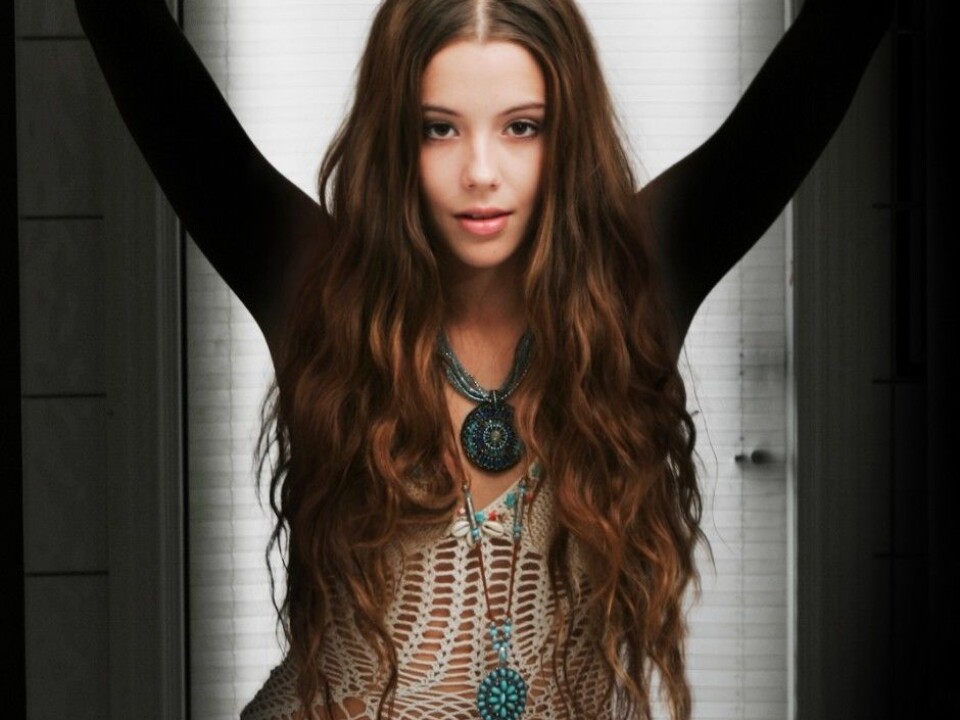
A wholesome image takes centre stage
A musicologist says old-fashioned gender roles may be putting limits on female pop artists.
Artists play roles. But gender roles are often a major factor when artists create an image, and when the media and fans then craft particular perceptions of them.
That's the conclusion of musicologist Jon Mikkel Broch Ålvik, after he analysed the careers of two musicians and vocalists from Norway for his doctoral degree. The artists, Marit Larsen and Marion Ravn, entered the scene as the pop duo M2M and have gone their separate ways after splitting up in 2002.
Ålvik, who works at the University of Oslo, thinks they also took different roads when choosing and presenting gender types.
While Larsen projects a childlike and nostalgic femininity, Ravn opted for the opposite, with a kind of a “naughty girl” image.

For a while Ravn was blamed for the M2M break-up. She was the first of the two to release a solo album, which received good reviews.
“But when Larsen’s solo album came out the next year the media rated her as the more talented of the two. Ravn was hammered by journalists and critics,” says Ålvik.
Personification of innocence
Ålvik believes the differential treatment of the two pop stars was linked to the two images of womanhood the two presented.
Larsen is the Housewife, the Girl Next Door, the Girl Child.

“In the music video ‘If a song could get me you’ she is the personification of innocence – wearing angel wings. She is sitting in a toy boat and places herself in a rock band setting where she tumbles around. The child is being allowed to play adult games,” says Ålvik.
“Her voice is one-dimensional and squeaky clean. She is captivating without being threatening by being sexually alluring."
Larsen giggles with embarrassment on stage. She is modest and is viewed as genuine and authentic by the media.
Ravn is her direct opposite. She has posed on the cover of men’s magazine Mann. She is viewed as brazen and artificial.
“Ravn gesticulates emphatically in her music and her performances and has never tried to conceal that she loves being in the limelight. She is direct and confrontational,” he says.
Ravn is consistently seen as a contrast to Larsen. Larsen’s character is a success partly because of this dichotomy, Ålvik says.
He thinks that when the rather Victorian image that Larsen conveys is considered an ideal, Ravn’s energetic and sexy type is increasingly perceived as wrong.
Unreal
Ålvik has investigated how the artists create their stage characters – their persona.
He noticed that words like authentic, honest and playful often crop up when female artists are being characterized in a positive way, as compared to the negative traits of being commercial and artificial.
He believes that female artists are generally as proficient and conscious as males when it comes to fashioning an image. We mustn’t be deceived into thinking that we are observing and getting to know the real individual behind the artist.
“There is nothing about Marit Larsen’s persona that is not planned and constructed. There’s nothing real, authentic or natural about this persona,” writes Ålvik in his doctoral thesis, and he says he can back up this claim.
He has analysed Ravn’s and Larsen’s own statements in interviews, reviews of albums, lyrics, music videos and melodies. Ålvik use an array of analytical fields including gender theory, dramaturgy, musicology and studies of celebrities.
He reads their lyrics critically and poses questions about the meanings they create.
Rigid gender roles
“The point is that we cannot understand how she is as a person from how she is an artist - no more than we can understand what it means to be a woman from the stereotypes presented by female artists,” says Ålvik.
“In my opinion Larsen veils the fact that she is an enterprising woman who works ardently at making a career for herself.”
Ålvik thinks that Larsen’s repertoire of female roles is problematic, because "it creates expectations of how female artists are supposed to be,” he says.
He fears that these kinds of assumptions help cement strong gender roles in the music world – an ideal in which “completely normal” female protagonists write songs in their childhood bedrooms and strive not to make a commotion.
But don’t lots of artists project other types of women’s roles?
“Sure, but concepts such as ‘honest’ and ‘authentic are in danger of being associated with women and especially certain types of women,” says Ålvik.
He argues that these words limit the flexibility of female artists if the characterizations restrict the artists to only an old-fashioned or childish kind of feminity.
--------------------------------------
Read the original in Norwegian at forskning.no.
Translated by: Glenn Ostling






























